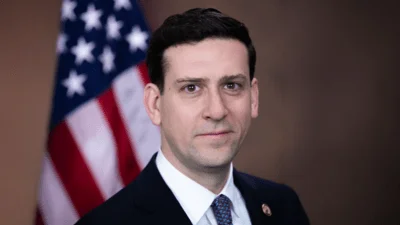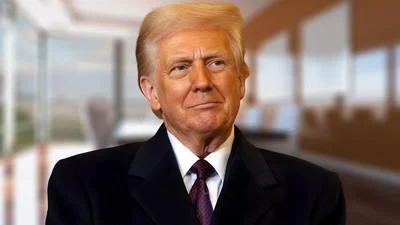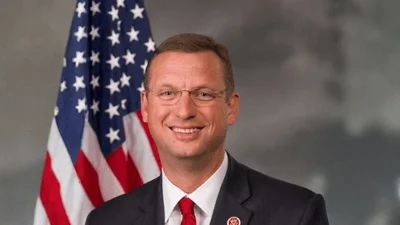IDAHO FALLS, Idaho - DOE Under Secretary for Science Paul Dabbar visited the Idaho National Laboratory Site last week, where he viewed one-of-a-kind equipment and processes used to advance cleanup by EM and cleanup contractor Fluor Idaho.
Dabbar’s tour took place in conjunction with the joint annual meeting of the State and Tribal Government Working Group (STGWG) and the National Governors Association's (NGA) Federal Facilities Task Force (FFTF) at which he was the featured speaker.
At the DOE-Idaho site, Dabbar visited the Advanced Mixed Waste Treatment Project (AMWTP), Radioactive Waste Management Complex (RWMC), and Integrated Waste Treatment Unit (IWTU).
Dabbar looked on as a Fluor Idaho employee donned a “bubble suit," complete with supplied air, as he prepared to clean out a boxline to ensure no risk of a criticality as waste was sized and repackaged for supercompaction at the AMWTP.
At the joint meeting, Dabbar spoke about efforts to ensure safe, steady progress at EM sites, position assets for future beneficial use, and prepare the next generation workforce.
Emphasizing the vital roles states and tribal nations hosting DOE facilities have filled, Dabbar noted that “tremendous progress continues across the board in the areas of national security, scientific research, energy dominance, and environmental cleanup."
At EM sites, workers have broken ground on a new ventilation system at the Waste Isolation Pilot Plant (WIPP) in New Mexico to increase shipments to the facility, completed the final phase of building demolition for Buildings H2 and G2 at the Separations Process Research Unit, begun moving radioactive sludge away from the Columbia River at Hanford, and are on pace to complete cleanup at a Tonopah Test Range site in Nevada.
Dabbar highlighted work to solve technical challenges by leveraging the capabilities of the national laboratories, remove regulatory roadblocks that stand in the way of progress, and bring urgency to the decision-making process.
“This will enable EM to maximize the most promising opportunities to enhance safety, shorten schedules, increase transparency, and reduce costs, culminating in the best results for cleanup communities and the best value for American taxpayers," Dabbar said.
Dabbar also discussed the Department’s ongoing workforce needs and efforts to enable more young people to pursue science, technology, engineering, and math (STEM)-based education and careers. He expressed appreciation for the DOE Tribal Working Groups’ focus on STEM, reiterating Energy Secretary Rick Perry’s commitment to enhancing STEM opportunities in Indian Country.
Participants in the joint annual meeting also were briefed on EM activities by Mark Gilbertson, Associate Principal Deputy Assistant Secretary for Regulatory and Policy Affairs, and Ken Picha, acting Associate Principal Deputy Assistant Secretary for Field Operations.
STGWG formed in 1989 to bring together representatives from states and Indian tribes that host or are otherwise affected by DOE sites or facilities associated with the production and cleanup of the nuclear weapons complex. Two members of the Shoshone-Bannock Tribes gave a cultural briefing to STGWG during their visit at the nearby Fort Hall Indian Reservation.
The NGA FFTF consists of governor-appointed policy and technical representatives from 13 states that host DOE facilities with a purpose of assisting DOE in improving coordination of its major program decisions with state regulators.
In a separate site tour, more than 50 members of STGWG and NGA FFTF were briefed on EM cleanup projects at AMWTP, RWMC, Idaho Nuclear Technology and Engineering Center (INTEC), and IWTU.
At AMWTP, the group viewed robotic arms size-reduce transuranic waste and prepare the material for the supercompactor, which reduces 55-gallon waste drums to 4-inch-tall pucks for disposal at WIPP.
STGWG and NGA FFTF members were also among the site’s first tour groups to see completed modifications to INTEC’s CPP-659 hot cell. Operators use the hot cell to repackage remote-handled transuranic waste. The hot cells’ hatch covers were enlarged to accept larger waste containers. As a protective measure, a mechanism was fabricated to allow operators to open and close the hatch covers.
Source: U.S. Dept. of Energy, Office of Environmental Management









